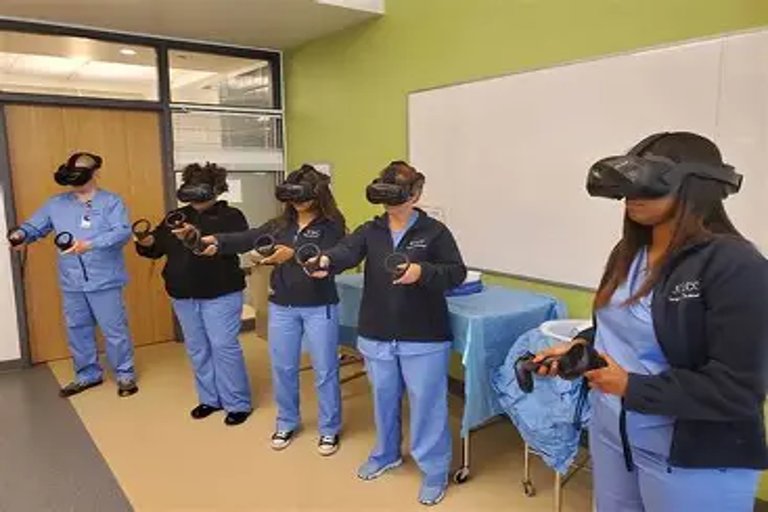Students at NSCC Create Virtual Reality History Exhibit
A new VR project immerses users in Halifax's 1917 Explosion and other key events from Maritime history.
July 04, 2025 at 19:08 | By Jacob Benoit, Prairie Signal

Students at Nova Scotia Community College (NSCC) are blending technology and storytelling in a groundbreaking new virtual reality (VR) exhibit that transports users back in time to experience pivotal moments in Halifax’s history. The project, titled 'Echoes of the Harbour,' was developed by a team of digital arts, history, and IT students as part of a capstone collaboration.
The centerpiece of the exhibit is an immersive recreation of the 1917 Halifax Explosion, one of the deadliest non-nuclear blasts in history. Users don VR headsets and are guided through a first-person experience of the city’s waterfront moments before, during, and after the disaster. Period-accurate audio, visuals, and narration bring the moment vividly to life.
Lead developer Erica MacNeil says the goal was to humanize history and create emotional engagement. 'It’s not just about watching events unfold—it’s about understanding the people who lived through them,' she explained. 'We wanted users to feel the urgency, confusion, and resilience that defined that day.'
The exhibit also includes interactive modules focused on lesser-known episodes in Halifax’s past, such as the city’s Black Loyalist settlements, Mi’kmaq trading networks, and the WWII shipbuilding boom. These scenes were constructed using archival materials and 3D scans of artifacts from local museums.
To ensure historical accuracy, students worked closely with the Nova Scotia Archives, the Maritime Museum of the Atlantic, and several local historians. Costuming and architecture were modeled using blueprints and photographs from the era, while voice acting was sourced from local theatre schools.
The project has drawn praise from educators and heritage professionals across the region. 'It’s one of the most innovative uses of VR we’ve seen in a Canadian college setting,' said Fiona Gibbons of the Atlantic Canada Historical Society. 'It shows how digital tools can breathe new life into our understanding of the past.'
The exhibit premiered at NSCC’s Ivany Campus last weekend and will travel to libraries, schools, and community centres throughout the fall. The team has also developed a companion version for classroom use, complete with discussion guides and educator resources.
Accessibility was a key concern during development. The app includes closed captioning, adjustable narration speeds, and settings for users sensitive to motion. A non-VR video walkthrough is also available for those without headsets.
Several students involved in the project have already secured internships or job offers with tech firms and museums thanks to their work on the exhibit. 'This was the most hands-on learning we’ve ever had,' said UX designer Jamal Greaves. 'We weren’t just building code—we were telling stories that matter.'
Funding for 'Echoes of the Harbour' came from a mix of provincial grants and private donors, including a Halifax-based software company and a local philanthropic foundation focused on education and culture.
The NSCC team is already exploring future projects, including a VR tour of historic Lunenburg and an augmented reality app that overlays archival photos on current cityscapes. Faculty advisors say the success of this project has set a new benchmark for experiential learning at the college.
Community reaction has been enthusiastic, with many visitors describing the experience as both moving and informative. 'It gave me goosebumps,' said one attendee. 'I’ve read about the explosion all my life, but this made it real in a way I never imagined.'
The virtual exhibit is expected to be made available to the public online later this year, expanding access to those outside Nova Scotia and offering a new model for how history can be preserved and explored in the digital age.